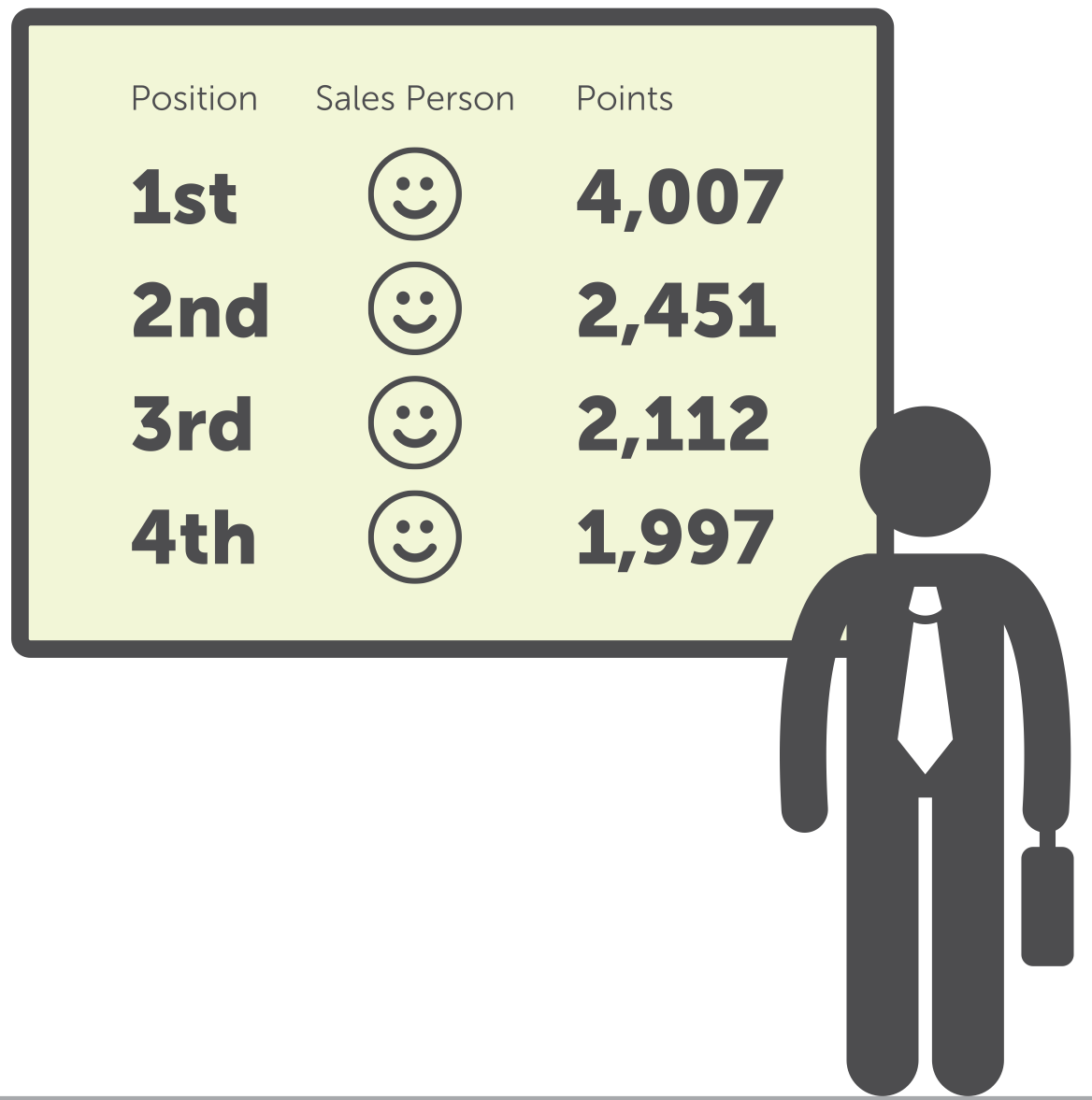
Ah, the sales leaderboard. It’s been around forever (or so it feels), and thanks to digital advancements, it’s only getting better.
Whether you implement one in the digital form, or go classic and fill up a white board, you should definitely have a publicly displayed leaderboard in your office. And you should love it for these five reasons:
1. Fueling the competitive spirit fuels motivation.
There’s nothing like putting rankings up in lights to fuel a sales contest. Regardless of age, role, tenure… or, well, any characteristic really, nobody wants to be at the bottom of a leaderboard. Craft your contests carefully around important sales activities – such as making calls, booking demos or closing business – and as those bottom performers work their way to the top, they’ll improve behaviors that drive revenue.
2. Displaying points publicly helps to hamper cheating.
Especially when you first start running contests, or when offering expensive incentives, it’s natural to worry about whether sales reps might cheat. When you put their points up on a widely displayed leaderboard, though, you might be surprised at how that action alone can deter falsifications. It actually does so in two ways:
– When everyone sees a sales rep’s points, it tends to make that rep feel more accountable for how he or she is earning them.
– When team members see others’ points, if anything seems out of the ordinary, a certain amount of policing will almost always take place. (This is especially the case when you take steps to maximize your team’s contest engagement and really tap into their competitive spirit.)
3. Keeping a contest in front of sales teams keeps it from going stale.
One of the most popular reasons contests don’t produce results? Participants forget about them. Think about it: Salespeople constantly juggle responsibilities; surrounding them with leaderboards – ideally on their mobile devices, in your CRM system and on any television screens around the office – won’t let them forget to compete as they move through day-to-day activities.
4. Rankings let reps know who they can learn from.
Do your reps really know what their peers’ strong suits are? They will when they see which individuals rise to the top of the leaderboard in which contests. Then, when they’re not at the top of the rankigns, they’ll know who to go to for tips and tricks on getting there. And again, if your contests force team members to compete around crucial sales activities, your reps can take those lessons learned from top performers and use them to become better professionals.
5. Rankings let reps know exactly where they stand.
On the same token, displaying rankings not only lets reps understand better what their strong suits and weaknesses are, but how they compare to the rest of the team. This can be especially useful during onboarding. Place new sales reps in contests against those who’ve been around for a while, and you’ll be giving those newbies an understanding of how far they have to go.
Well, there you have it – five reasons for you to recognize sales leaderboards as a useful tool for motivating, teaching and engaging your sales team. Now, you just have to decide on the medium (Spreadsheets? Digital?) that you’ll go with, and the contests you’ll use to support them.


